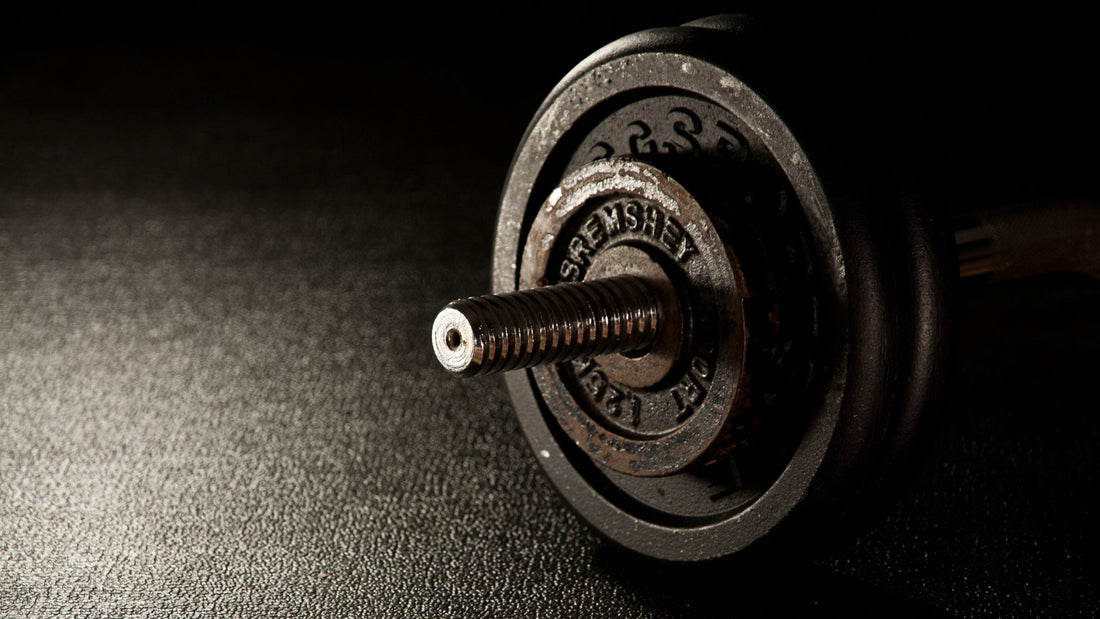
Lifting Chalk: Messy Ritual vs. PTI Grip’s Clean Innovation
Share
If you’ve trained long enough, you know the scene: head bowed, hands buried in a chalk bucket, pale dust flying as you coat every inch of your palm. Lifting chalk promises one thing—grip that won’t fail when the weight climbs—but comes with its own baggage: constant re‑chalk breaks, clouds of powder coating every surface, and the diminishing returns of a barrier that washes away the moment you sweat. What if you could ditch the bucket altogether and secure every lift with a single tool? Enter PTI Grip—a patent‑pending, clamp‑based alternative that delivers superior hold without the hassle of chalk.
In this article, we’ll:
-
Trace the origins and mechanics of lifting chalk
-
Uncover its practical drawbacks in today’s gyms
-
Introduce PTI Grip and explain how it reproduces—and exceeds—chalk’s benefits
-
Offer real‑world tips for integrating PTI Grip into your routine
1. The Science Behind Lifting Chalk
Why Chalk Became a Gym Staple
Chalk, or magnesium carbonate, has roots in gymnastics and rock climbing, where a dry grip can make the difference between success and disaster. In weight training:
-
Moisture Wicking: Chalk absorbs sweat instantly, transforming damp, slippery hands into a dry, coarse surface.
-
Friction Increase: A matte finish on skin boosts traction, reducing micro‑slips that erode force transfer.
-
Psychological Cue: The ritual of chalking up centers focus and signals readiness for maximal effort.
How Chalk Works at the Skin‑Bar Interface
On a microscopic level, pure magnesium carbonate particles fill the tiny valleys in skin and bar knurling, creating more contact points and higher friction coefficients. That translates into fewer lost reps due to a slipping grip—at least until chalk wears off or is washed away by perspiration.
2. The Hidden Costs of Chalk
Despite its benefits, lifting chalk introduces several persistent challenges:
Frequent Reapplication
During a heavy deadlift or a set of muscle‑snatches, chalk begins to shed as soon as your hands warm up. Each time you pause to reload chalk:
-
You lose training tempo
-
You break focus and muscle tension
-
You risk over‑chalked hands that become slick instead of tacky
Chalk Dust Everywhere
From barbells to benches, ceramic tiles to your workout partner’s shirt, chalk residue infiltrates every corner:
-
Equipment shafts become slippery
-
Gym surfaces require constant cleaning
-
You leave a trail of white footprints and greasy handprints
Diminishing Returns in Extended Sessions
Chalk’s moisture control is finite. In long, sweat‑soaked workouts, a single application won’t hold up:
-
Hands become oversaturated, dissolving the very powder you rely on
-
Layering more chalk only makes things messier, not more secure
-
Some athletes turn to liquid chalk, which can irritate skin and still needs reapplication
Skin Irritation and Dryness
Magnesium carbonate can strip natural oils, leading to rough, flaky skin. Over time, repeated chalking:
-
Causes calluses or cracks that impede grip strength
-
Creates itchiness, discomfort, or allergic reactions in sensitive lifters
-
Requires extra skincare routines, diverting attention from training
3. PTI Grip: A Chalk‑Free Alternative
PTI Grip reimagines grip support by removing the need for powder. Rather than altering your skin’s surface, it mechanically bonds to the bar or handle, acting as a seamless extension of your hand.
How PTI Grip Works
-
Slip‑On Simplicity: No wrapping or dusting—slide the device over any barbell, dumbbell, or machine handle.
-
Automatic Clamping: As you close your hand, internal jaws engage and lock onto the metal, preventing rotation or slippage.
-
Ergonomic Fit: Molded contours match your palm’s anatomy, distributing pressure evenly without hotspots.
-
Quick Release: Relax your grip and lift the device off—no untangling, no residual mess.
Why PTI Grip Outperforms Chalk
| Feature | Lifting Chalk | PTI Grip |
|---|---|---|
| Moisture Control | Temporary; reapplication needed | Permanent dry‑hold; works despite sweat |
| Setup Time | Several seconds per re‑chalk | Instant slip‑on |
| Surface Residue | Equipment and gym floor covered | Device only; hands stay clean |
| Consistent Friction | Decreases with perspiration | Unwavering clamp‑based grip |
| Skin Health | Dries and irritates | Skin remains intact; no stripping |
| Maintenance | Clean-up required everywhere | Wipe device clean after use |
Real‑World Benefits
-
Long Workouts: No mid‑set chalk breaks; focus stays on training.
-
Multiple Disciplines: Use on barbells, kettlebells, ropes, and cable handles without swapping gear.
-
Hygiene: No chalk dust means less bacteria and mold buildup on gym surfaces.
-
Durability: Premium composites resist sweat, abrasion, and heavy loads—day after day.
4. Integrating PTI Grip into Your Routine
Switching from chalk to PTI Grip requires minimal effort:
-
Start with Key Lifts: Deadlifts, snatches, cleans—any movement where chalk fails most critically.
-
Record Your Progress: Track repeat maxes without re‑chalk interruptions.
-
Combine with Conventional Grip Work: Use farmer’s walks or plate pinches to maintain raw grip strength.
-
Phase Out Powder: Gradually reduce chalk use, relying increasingly on PTI Grip’s clamp action.
Within one week, most athletes report smoother sessions, fewer interruptions, and a renewed sense of control under load.
The Story Behind the Innovation
PTI Grip was born when two training partners—Connor and Bryce—grew tired of powder pits and broken routines. Drawing on their backgrounds in strength sports, they prototyped dozens of clamp designs right on the gym floor. Their goal: replicate chalk’s friction benefits without any of its mess. The result is PTI Grip’s patent‑pending mechanism, rigorously tested in sweat, steel, and serious weight. Learn more about their journey here: Our Story.
Final Thoughts
Lifting chalk will always hold a place in gym lore. But for athletes who demand consistent performance, minimal maintenance, and a clean training environment, PTI Grip offers a revolutionary alternative. It’s more than a grip tool—it’s an evolution in how you connect with every lift.
Ready to leave the powder behind? Elevate your grip, streamline your sessions, and embrace the next generation of traction:
